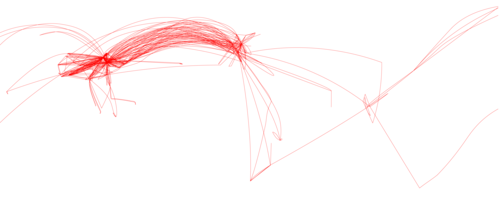FUTURE PARKS: Bundling Biodiversity and Mobility from North Melbourne to Kensington
2019 The Future Parks Design Competition Melbourne, Australia Client: Hinterlands Urbanism and Landscape, Chicago, Illinois, USA Team: Grant Penfield Haugen, Lin Jiang, Zhengge Jiang, Conor O’Shea, and Michael O’Shea Role: Mobility Consultant
This competition entry is an urban development prototype that showcases novel best mobility and ecological practices.
Future Parks hybridizes the natural plant and animal communities of Melbourne’s ecoregional context with emerging mobility systems. Helping to accommodate Melbourne’s projected population increase and unforeseen climate chance impacts. The Kensington Connector and the Riverside Connector are included in this proposal, which together form a two-kilometer-long pedestrian, micromobility, and biodiversity corridor stitching existing open space and mobility networks together. Hub 3.0, surrounding the new North Melbourne Metro, Hub 3.0 features a regional passenger droneport and vertical freight warehouse, while Surface Labs is a personal automobile-free zone that prioritizes pedestrian movement and micromobility.
Connecting North Melbourne with Kensington The two-kilometer long east-west corridor bundles pedestrian lanes, micromobility lanes, and limited automobile lanes with a sequence of distinct ecological zones derived from the Southeastern Temperate Forest Ecoregion. The plant selection is curated to withstand predicted and unknown conditions caused by climate change, reduce urban heat island effect, and slow down and clean rainwater. The spine stitches together Maribyrnong River with J.J. Holland Park, the Moonee Ponds Creek Trail, the proposed Hub 3.0 development, the North Melbourne Recreation Centre, and the proposed future mobility zone, Surface Labs.
Kensington Connector, Hub 3.0, and Surface Labs Located at the site of the new North Melbourne metro stop and Arden Urban Renewal Precinct, Hub 3.0 combines a passenger droneport, vertical freight warehouse, and new mixed-use development with public open spaces derived from Melbourne's ecoregion. The development is a site for testing new modes of mobility, ecological design, and community programming areas.
HUB 3.0 Proposed mobility flows
Mobility Zones
Potential Regional Drone Connections This proposal acknowledges Australia’s Aboriginal peoples and that the Greater Melbourne Metropolitan area sits on the traditional territory of three peoples of the Kulin nation: Wurundjeri, Boonwurrung, and Wathaurong
I consulted on ways emerging and future personal and freight mobility systems could combine with strategies to reduce urban heat island effect and storm events due to climate change; urban flora and fauna biodiversity; acknowledgement of aboriginal claims to the land; and, anticipated increase in resident and worker populations.









